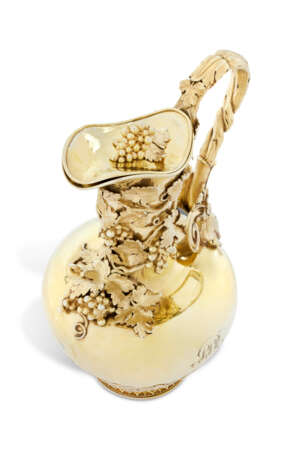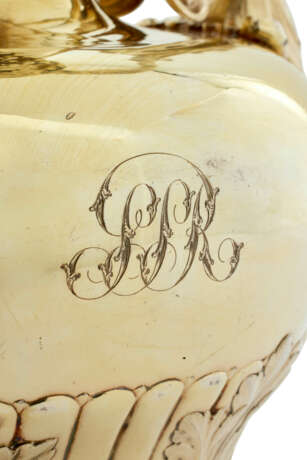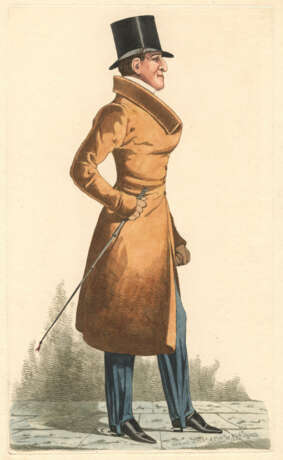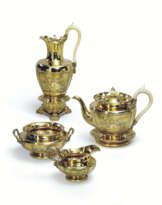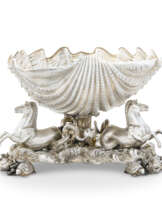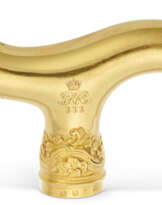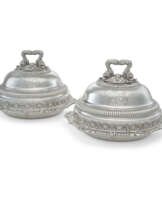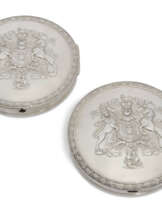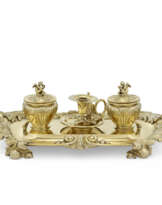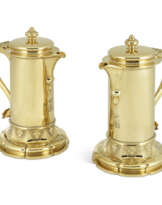ID 992616
Lot 14 | A GEORGE IV SILVER-GILT CLARET JUG AND COVER
Estimate value
£ 7 000 – 10 000
MARK OF JOHN BRIDGE, LONDON, 1826
Baluster shaped, the lower body chased with flutes and acanthus, the neck applied with grapevine, with twisted vine handle, the detachable cover with a grape finial, one side engraved with monogram WSD under a duke's coronet, the other side with monogram SSR, marked on body, flange of cover and finial, the base also stamped Rundell Bridge et Rundell Aurifices Regis Londini, body and cover numbered 2
11 in. (28 cm.) high
53 oz. 18 dwt. (1,676 gr.)
The initials and coronet are for William George Spencer Cavendish, 6th Duke of Devonshire (1790-1858), only son of William Cavendish, the 5th Duke (1748-1811) and his wife, the notorious court beauty and inveterate gambler, Lady Georgiana Spencer (1757-1806).
Provenance
William George Spencer Cavendish (1790-1858), 6th Duke of Devonshire.
Anonymous sale; Sotheby's, New York, 12 October 1990, lot 278.
Anonymous sale; Christie's, New York, 20 April 2000, lot 183.
Special notice
This lot has been imported from outside of the UK for sale and placed under the Temporary Admission regime. Import VAT is payable at 5% on the hammer price. VAT at 20% will be added to the buyer’s premium but will not be shown separately on our invoice.
| Artist: | John Bridge (1755 - 1834) |
|---|---|
| Applied technique: | Metalwork |
| Medium: | Silver |
| Historical era: | Period of George IV |
| Place of origin: | Northern Europe, Europe, United Kingdom |
| Category: | Carafes, Decanters, Jugs, Pitchers |
| Auction house category: | All other types of objects |
| Artist: | John Bridge (1755 - 1834) |
|---|---|
| Applied technique: | Metalwork |
| Medium: | Silver |
| Historical era: | Period of George IV |
| Place of origin: | Northern Europe, Europe, United Kingdom |
| Category: | Carafes, Decanters, Jugs, Pitchers |
| Auction house category: | All other types of objects |
| Address of auction |
CHRISTIE'S 8 King Street, St. James's SW1Y 6QT London United Kingdom | |
|---|---|---|
| Preview |
| |
| Phone | +44 (0)20 7839 9060 | |
| Buyer Premium | see on Website | |
| Conditions of purchase | Conditions of purchase |

